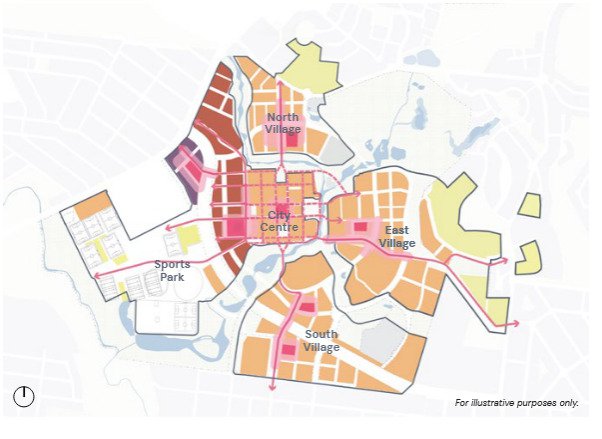
La Trobe’s home campus was lovingly laid out in the 1960s as a bush donut – across a 255 ha sprawl of bushland, a mass of scraggy green interspersed with car parks would be a buffer zone between the modernist post-ivory towers in the heart of the donut and the harsh reality of the northern suburbs beyond it.
Theo Farrell is the latest in a succession of La Trobe Vice-Chancellors to try to carve up the utopian country-meets-city idyll that was embellished with a round agora, a fanciful moat and a bunch of lovelorn 1960s and 70s Brutalist/ Stalinist/ Cheapest structures that have been painstakingly modernised over successive generations.
The campus has slowly been modernised, but it has never become the ‘University Town’ promised in masterplans for more than a decade – and the bush donut has kept La Trobe physically hidden from much of the passing world.
Until, perhaps, now. This week, Professor Farrell launched the university’s latest master plan, which moves from the ‘University Town’ terminology to creating a ‘University City.’ The difference here is that the $5 billion plan aims to redevelop the donut as suburbia – developing tracts of land that will unlock cash for the university coffers and bringing in 15,000 neighbours, at least some of whom will be interested in enrolling at their local institution.
The 30 year project has plenty of hurdles to get over before the University-Town-on-Steriods plan is realised.
Despite the 15,000 new residents, two thirds of the newbies may not be students and on-campus student accommodation was apparently planned to only rise from 1,350 to 2,300.
This is really interesting for a bunch of reasons.
The 1960's bush campus layout was popular – with similar layouts at University of Canberra, ANU, Flinders and echoes at a number of other contemporary institutions. The idea of a sanctuary for study and knowledge creation, with gloriously large car parks for all the gas guzzling vehicles that staff and a few lucky students had at the time seemed ingenious.
Fast forward 50+ years and the bush donut principle appears less relevant. Universities need to connect with communities, not hide away from them, and pressing finances, combined with a lack of land available for development in our cities means that universities can get a bunch of new potential students moving in next door as well as a financial sugar hit from flogging off chunks of the donut.
University of Canberra has been in the property development game for a while, and the University of Tasmania hoped to but was stymied by locals.
Professor Farrell’s plan has a long way to run before the green donut becomes brown and La Trobe’s labs have future latrobots (yes this was once a term used to describe the University’s students) kicking a football on the road outside their door. But the conjunction of more than a decade of trying, Melbourne’s housing crisis, rising land values in the north and the imprimatur of a former-Premier-now-Chancellor batting strongly for a win may well mean the University City’s time has come. The plan still allows for a healthy chunk of bushland being preserved, but critically, brings the neighbourhood to the campus door.
"The boundary between the University and the wider community is deliberately porous within our University City," Professor Farrell told Future Campus yesterday.
"Our centres of research, innovation and learning will be seamlessly connected with industry, culture, health, sport, vibrant communities, and generous green space. The scale of University City creates a unique setting for diverse residential accommodation that actively promotes sustainable living, while retaining and enhancing the biodiversity of the Nangak Tamboree eco-corridor — a vital link connecting community and environment.
"Currently, up to 10% of our Bundoora students reside on campus. Even allowing for an increased proportion in future years, we expect demand for student residential places to stabilise at around 5,000 — enabling approximately 10,000 places for non-student residents as we build a thriving, vibrant and sustainably integrated community."
Whether Professor Farrell’s successors will still have NOSC allocation restrictions as a result of only building an extra 1,150 beds for students over 30 years in the $5 billion plan remains to be seen. At a rate of 38.33 beds per year, even Future Campus could imagine knocking off that goal without raising too much of a sweat.
